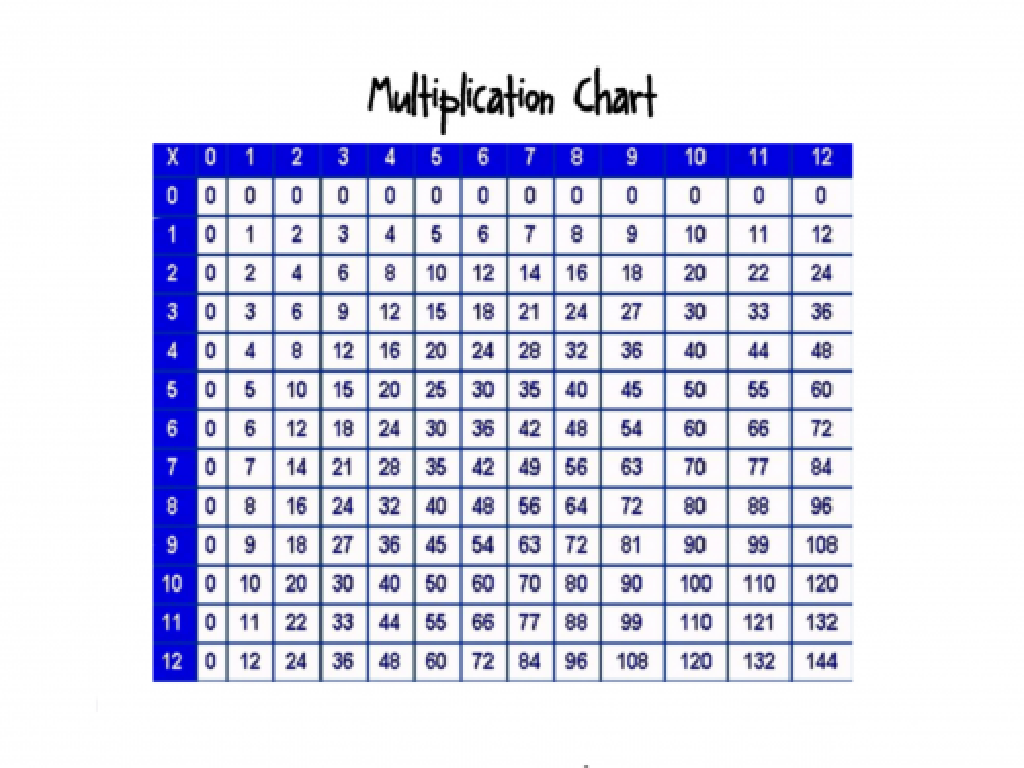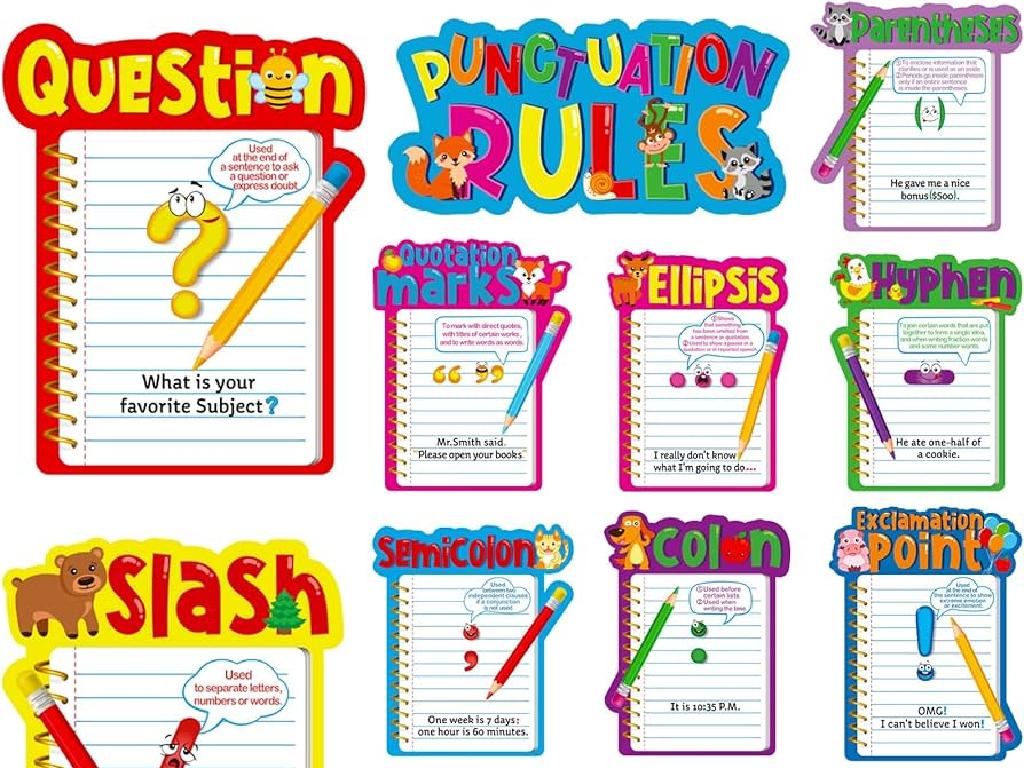Add In Any Order
Subject: Math
Grade: First grade
Topic: Addition Strategies Up To 10
Please LOG IN to download the presentation. Access is available to registered users only.
View More Content
Welcome to Addition!
– Learning to add is fun!
– Addition combines things together
– Like adding apples and oranges in a basket
– Numbers can be added in any order
– 2 + 3 is the same as 3 + 2
– Same answer with different orders
– Try 4 + 1 and 1 + 4 to see it’s true!
|
This slide introduces first graders to the concept of addition as a fun and essential skill for combining quantities. Emphasize that addition is like putting things together in a group, such as combining fruits in a basket. Highlight the commutative property of addition, which means that numbers can be added in any order, and the result will be the same. Encourage students to practice this concept with simple numbers up to 10, using real-life examples or manipulatives like blocks or counters. This will help them understand and remember that the order of numbers doesn’t affect the sum.
Understanding Addition
– What is addition?
– Addition means putting numbers together
– Adding gives a total count
– If you have 3 apples and 2 more apples, how many apples do you have now?
– Symbols ‘+’ and ‘=’ in addition
– The ‘+’ sign combines numbers, ‘=’ shows the result
– Practice adding numbers up to 10
|
This slide introduces the concept of addition to first-grade students. Start by explaining that addition is a way of finding out the total number when we put groups of things together. Use everyday examples, like combining apples or toys, to illustrate this point. Show how the ‘+’ symbol is used to represent the combining of two numbers and how the ‘=’ symbol is used to show the result of this combination. Encourage students to practice with simple numbers that add up to 10 or less, ensuring they understand the concept of addition before moving on to more complex problems. Use objects or visual aids to help them count and visualize the process.
Add in Any Order: Commutative Property
– Numbers can be added in any order
– This is called the commutative property of addition
– Example: 2 + 3 equals 3 + 2
– It’s like flipping pancakes: they’re yummy on both sides!
– Both ways equal the sum of 5
– Whether we start with 2 or 3, we end up with 5
|
This slide introduces the commutative property of addition to first graders, emphasizing that numbers can be added in any order and the result will be the same. Use simple examples like 2 + 3 and 3 + 2 to illustrate this concept. Relate the idea to everyday activities, such as flipping pancakes, to make it more intuitive. Encourage students to practice with different numbers up to 10 to solidify their understanding. During the lesson, have students come up with their own examples and share them with the class to reinforce the concept.
Addition: Order Does Not Matter!
– Adding 4 + 1
– Now, let’s try 1 + 4
– Compare both totals
– Do 4 + 1 and 1 + 4 give the same total?
– Discovering the Commutative Property
– Whether we add 4 to 1 or 1 to 4, the sum is always 5!
|
This slide is designed to introduce first graders to the concept that in addition, the order of numbers does not affect the sum. Start by demonstrating the addition of 4 + 1 on the board, and then reverse the order to 1 + 4. Ask the students to observe the results and confirm that the sum remains the same in both cases. This illustrates the Commutative Property of Addition, which states that numbers can be added in any order without changing the result. Encourage the students to practice with different numbers and to share their observations. This activity will help solidify their understanding of addition as they continue to learn and practice more addition strategies.
Fun with Addition: Add in Any Order
– Addition is like a fun game
– Use toys, fingers, or drawings
– Count using items you enjoy
– Numbers can be arranged in any order
– 2+3 is the same as 3+2
– The total always stays the same
– Practice with different combinations
|
This slide is designed to teach first graders that addition can be fun and interactive. Encourage them to use tangible objects like toys, or visual aids like drawings, to understand addition concepts. Emphasize that the order of numbers doesn’t affect the total sum, which is a fundamental property of addition known as the commutative property. During the lesson, engage students with hands-on activities where they can physically move items to see that regardless of the order, the total count remains constant. This will help solidify their understanding of addition as they learn to add numbers up to 10.
Class Activity: Addition Bingo
– Let’s play Addition Bingo!
– Solve addition problems on your card
– Use your addition skills up to 10
– Cover the correct answers
– Use counters or markers to cover numbers
– Shout ‘Bingo!’ for a full row
|
This interactive class activity is designed to help first graders practice their addition skills in a fun and engaging way. Provide each student with a bingo card that has a variety of sums up to 10. As the teacher calls out addition problems, students will solve them and cover the corresponding answers on their cards. Encourage students to use mental math to find the sums quickly. The first student to cover a full row horizontally, vertically, or diagonally should shout ‘Bingo!’ and win the game. Prepare several rounds of the game and ensure that all students understand the rules before starting. Possible variations of the game could include using different addition strategies, such as counting on fingers, using objects, or visualizing number bonds.





